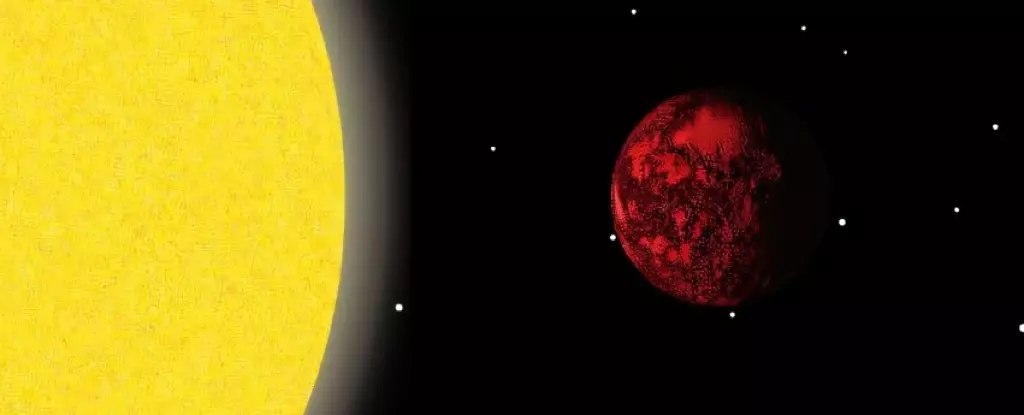In the ever-expanding field of exoplanet studies, the discovery of K2-360 b stands out as a noteworthy achievement. This newly identified Super-Earth, remarkable for its exceptional density, invites both intrigue and inquiry into the origins and characteristics of worlds beyond our solar system. K2-360 b is not just another rocky planet; its mass and structure underscore unique phenomena resulting from gravitational dynamics and stellar interactions.
K2-360 b is a fascinating specimen located in a tight orbit around its host star. With a mass approximately 7.7 times that of Earth, yet a size only 1.6 times greater, it boasts a density rivaling that of lead—about 11 grams per cubic centimeter. This makes it the densest member of the ultra-short-period (USP) Super-Earth classification, with the intriguing distinction of completing an orbit in just 21 hours—a timeframe shorter than a single rotation on Earth.
The significance of the planet’s density cannot be overstated. While Earth boasts a density of 5.5 grams per cubic centimeter, K2-360 b’s mass packed into its modest volume speaks to an intense and possibly tumultuous geological history. Such density levels hint at a substantial iron core that constitutes nearly half of the planet’s mass, drawing comparisons to various celestial structures, from traditional planets to more complex entities like brown dwarfs.
Despite the allure of its extreme density, the factors leading K2-360 b to develop such characteristics pose questions regarding its formation. Researchers propose that this planet may represent the remnant core of a gas giant, stripped of its gaseous envelope after migrating inward through intense stellar radiation. The inner migration process suggests complex gravitational interactions within the K2-360 system, as well as a reshuffling of its planetary dynamics.
The study of K2-360 b integrates many elements, from the physical modeling of its interior to the dynamical modeling of its orbital path. According to these models, K2-360 b experienced a fascinating evolutionary journey, one that involved fluctuating distances from its host star, leading to the atmospheric loss observed today. With the intense conditions expected in such a close orbit, the surface of K2-360 b could be dominated by molten lava, transforming it into a fiery landscape.
K2-360 b does not exist in isolation; it is accompanied by K2-360 c, a larger planet resembling Neptune in both size and density. The partner planet plays an integral role within the system, contributing to the dynamics governing the orbit of K2-360 b. The theory posits that gravitational interactions between the two planets may have caused K2-360 b to achieve its present comparatively tight orbit around their shared star.
Astrophysicist Alessandro Trani from the Niels Bohr Institute elaborates on this interaction, proposing that high-eccentricity migration facilitated the shortening of K2-360 b’s orbital period. Initially, the planet’s orbit was likely elliptical due to gravitational pushes from K2-360 c. Tidal forces may have then worked to smooth out its trajectory, ultimately leading to the circular orbit seen today.
K2-360 b emerges from the cosmic shadows as a testament to the complexities inherent in planetary formation and evolution. As astronomers refine their understanding of such dense worlds, they are uncovering patterns that defy expectations and challenge our comprehension of planetary systems. K2-360 b exemplifies an evolving narrative within the broader context of exoplanet research, indicating that the Universe continues to house an infinite variety of celestial beings. Each finding adds a new layer to our knowledge, compelling scientists and enthusiasts alike to explore, imagine, and respect the vastness of space. In a way, the strange characteristics of planets like K2-360 b act as sparks for creative thought—infinitely inspiring the realms of scientific discovery and science fiction.

